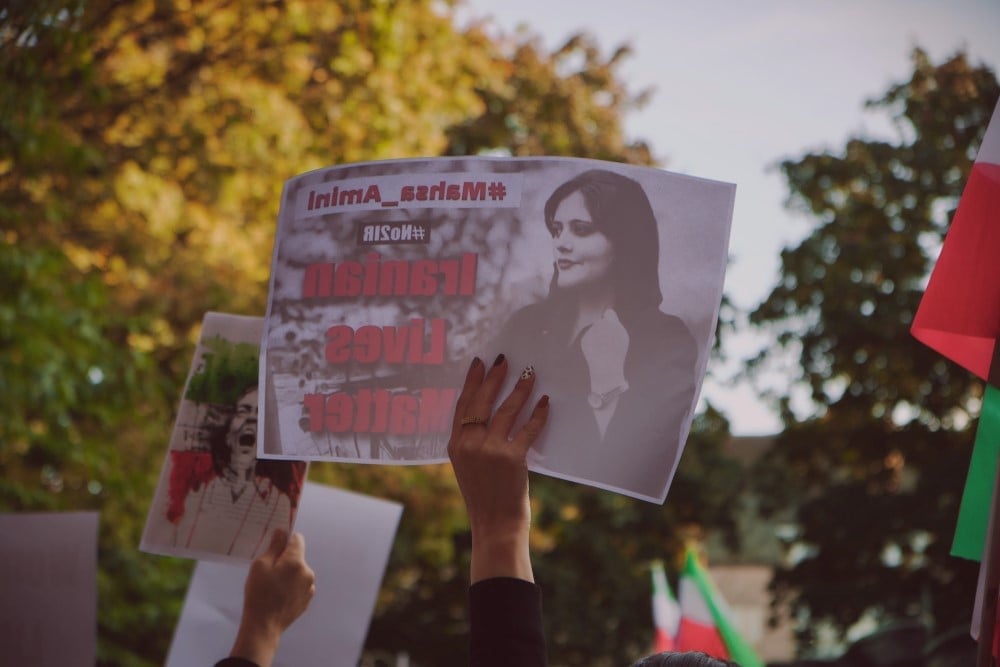
While all eyes are on the military side of the Israel-Iran conflict, demography could ultimately be the decisive factor in this battle.
The Iranian regime faces two key problems on the demographic front: A rapidly aging population, and declining support by the young generation. According to UN projections, Iran’s elderly population will be the largest in the Middle East by 2050. This could have devastating economic and political consequences.
A smaller working-age population will put an extra burden on the Iranian economy, which has been struggling for many reasons as it is. Iran under the Ayatollah regime relies on a weak and inefficient economic model and is falling behind advanced tech-driven nations.
Declining finances would also make it difficult for Tehran to keep up an expensive arms race against an economically robust Israel. To compound the problem, emigration and brain drain problems are growing as more Iranians leave the country in search of a better life.
Politically, the news could be even worse. To put it bluntly, many regime supporters will be dying in the coming decades. They will be replaced by youngsters who increasingly oppose Iran’s ruling elite.
A senior Israeli officer says that Tehran has lost the support of the fourth generation of the 1979 Revolution. The Iranian leadership will face deep problems even if it overcomes the current wave of protests, IDF intelligence research chief Amit Saar predicted.
Some experts say that Iran is now entering a prolonged period of civil unrest that could last for years.
Over time, a shrinking support base will make it difficult for the regime to maintain power and stability. Iranian leaders will have to invest growing resources to quell trouble at home at the expense of other priorities.
Israel’s demographic power
Meanwhile in Israel, the situation is different. While some demographic issues persist, the overall outlook is far brighter.
Israel boasts a strong birthrate, the highest in the developed world, with a large young cohort to replace older generations. While the population will also be aging, Israel is in a better position to deal with this process.
Some observers are warning that the rapid growth of Israel’s ultra-Orthodox population poses a problem. Ultra-religious Israelis tend to contribute less to the economy as many do not study math or English, which are vital in the modern world.
However, more ultra-Orthodox Israelis are opening up to such cores studies and to joining the workforce. Moreover, according to some experts more community members are quietly adopting a modern lifestyle, and some are turning secular. Israel’s secular birthrate also remains relatively high.
In parallel, the Arab-Israeli birthrate has declined as more Arab women gain education and postpone the age of marriage. Overall, Arabs are poised to make a growing contribution to Israel’s economy and further boost the country’s wealth.
Back to Iran: The Iranian ruling class is well-aware of the demographic problem, but effectively tackling it would be difficult. Notably, the crisis could also trigger extreme moves to shore up the regime, such as the development of nuclear weapons.
Israel will continue to closely watch the instability on Iran’s domestic front while monitoring its military moves.
At this time, the Israel-Iran conflict appears likely to escalate during the decade. But in the longer term, Tehran may be defeated far away from the battlefield, as the regime succumbs to crushing demographic and economic forces.
- SEO Powered Content & PR Distribution. Get Amplified Today.
- Platoblockchain. Web3 Metaverse Intelligence. Knowledge Amplified. Access Here.
- Source: https://israelradar.com/analysis-iran-regime-faces-bleak-demographic-future/
- a
- According
- Adopting
- advanced
- against
- Aging
- All
- analysis
- and
- Arab
- Arabs
- Archive
- base
- Battle
- Battlefield
- behind
- Better
- boasts
- boost
- Brain
- brighter
- burden
- chief
- class
- closely
- Cohort
- coming
- community
- Compound
- conflict
- Consequences
- continue
- contribute
- contribution
- could
- country
- country’s
- crisis
- Current
- deal
- decade
- decades
- decisive
- Declining
- deep
- demographic
- devastating
- developed
- Development
- different
- difficult
- Domestic
- during
- Dying
- East
- Economic
- economy
- Education
- effectively
- Elderly
- elite
- English
- Even
- expensive
- experts
- extra
- extreme
- Eyes
- Face
- faces
- Falling
- Finances
- Forces
- Fourth
- from
- front
- further
- future
- Gain
- generation
- generations
- Growing
- Growth
- High
- highest
- Home
- HTTPS
- IDF
- in
- increasingly
- inefficient
- instability
- Intelligence
- Invest
- Iran
- Iranian
- Israel
- Israeli
- issues
- IT
- joining
- Keep
- Key
- large
- largest
- Last
- leaders
- Leadership
- Leave
- Life
- lifestyle
- likely
- longer
- maintain
- make
- many
- math
- max-width
- Members
- Middle
- Middle East
- Military
- model
- Modern
- more
- moves
- Nations
- news
- notably
- nuclear
- Nuclear weapons
- Officer
- opening
- Other
- Outlook
- overall
- Parallel
- period
- plato
- Plato Data Intelligence
- PlatoData
- political
- population
- poses
- position
- power
- predicted
- Problem
- problems
- process
- Protests
- put
- quietly
- Race
- rapid
- rapidly
- reasons
- regime
- relatively
- remains
- replace
- replaced
- research
- Resources
- Revolution
- robust
- ruling
- Search
- situation
- smaller
- some
- Stability
- strong
- Struggling
- studies
- Study
- such
- support
- supporters
- tehran
- The
- time
- to
- trigger
- trouble
- Turning
- Ultimately
- under
- Unsplash
- vital
- warning
- Watch
- Wave
- Wealth
- Weapons
- which
- while
- WHO
- will
- Women
- Workforce
- world
- would
- years
- young
- zephyrnet













